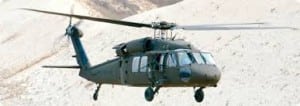
Developers of the future airborne capability environment are on the cusp of setting up the first-ever standard architecture for avionics systems in military procurement history.Terry Carlson, the current chair of the FACE steering committee, said that the standards set for avionics technology set by the consortium of over 80 firms are in their third iteration.“In the initial stages we were making big leaps in understanding,” he told Defense Daily. “Now, I would say, we are in the fine-tuning of these…

 By
By 








